Year of the American UAV Reaper
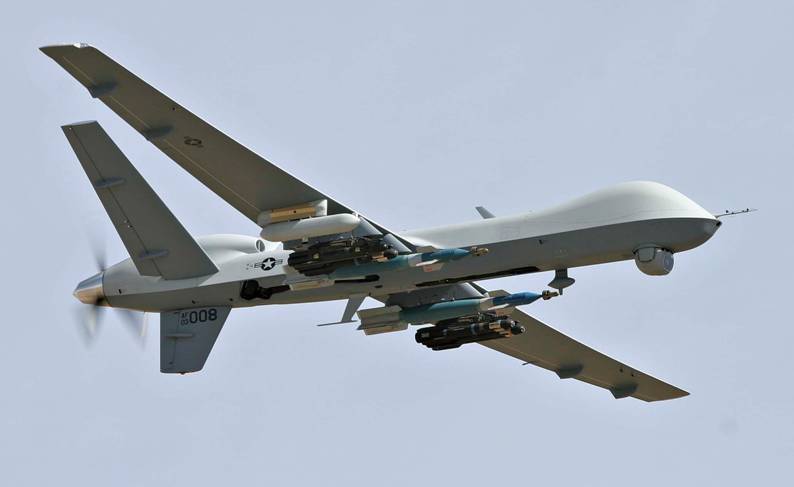
Two months ago, the American MQ-1 Predator unmanned aerial vehicle (Predator) recorded millions of flying hours into its account. Over 20 percent of these watches fall on this year. Replacing the Predator MQ-9 Reaper managed to fly almost 250 thousands of hours. US strategic unmanned aerial vehicles (MQ-1, MQ-1C, MQ-9, RQ-4 and RQ-170) flew about 400,000 hours this year, last year 300,000 hours, 185,000 hours in 2009 year and 151,000 hours in 2008 hours th It took 12 years of service (1995-2007, including development) so that the MQ-1 Predator could reach its first 250,000 hours in the air, two years (2007-2009) to fly another 250,000 hours from 500,000 total and only less than a year to Reach the next 250,000 hours by the spring of 2010.
Meanwhile, 500 MQ-1 and MQ-9 were built or ordered for the Air Force and the CIA (the largest UAV operator over Pakistan and other places). About 20 percent of them were lost as a result of accidents, fourteen were lost in this way only this year. In the army, there is a shortage of such UAVs.
The US Air Force ordered almost fifty MQ-9 Reaper unmanned aerial vehicles (Reaper) this year for $ 6.2 million each. Price will double when sensors are installed, fire control systems and communications equipment. This situation is typical for combat aircraft, which the Air Force also considers the Reaper.
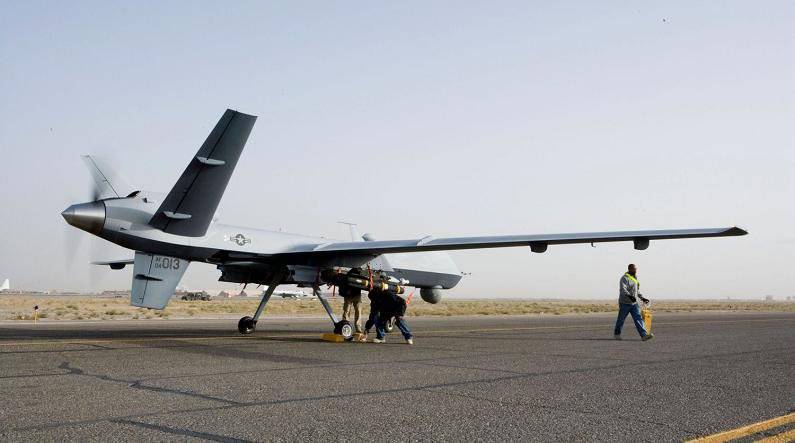
The Air Force already has more than 70 MQ-9 in service, the delivery of new ones will take about a year. The Air Force is planning to purchase another 200 UAV MQ-9 until it replaces the MQ-X. The MQ-1 Predator is being replaced by the MQ-9, and the last MQ-1 for the USAF was built last year. The overall MQ-1 and MQ-9 fleet in the United States Air Force consists of more than 250 UAVs, and by the end of the decade the army and the Air Force will have more than a thousand large, armed UAVs.
UAV MQ-1 Predator has evolved into a family of three vehicles. The original Predator weighs one ton with a length of 8.7 meter and a wingspan of 15.8 meters. It has regular suspension units under each plane, capable of carrying one 47-kilogram Hellfire rocket and an Stinger air-to-air missile. The Predator's highest speed is 215 kilometers per hour, the highest cruising speed 160 kilometers per hour and the highest flight altitude 8,000 meters. The standard flight duration is 12-20 hours.
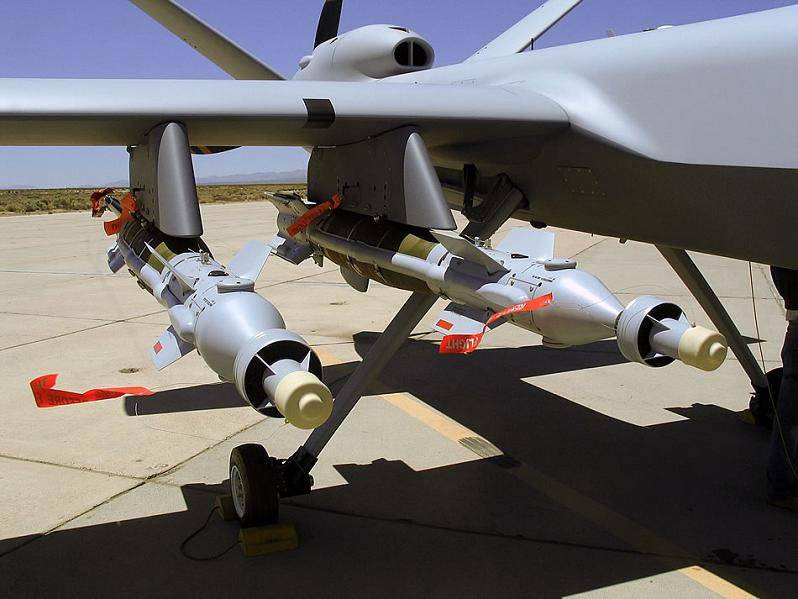
The MQ-9 Reaper (Reaper) weighs 4.7 tons, has a 11.6 meter in length and a wingspan of an 21.3 meter. It contains six suspension points for carrying 682 kg of weapons, which include up to eight Hellfire missiles, two AMRAAM air-to-air missiles, two AMRAAM air missiles, two Maverick missiles, two 227-kilogram smart bombs (with laser or GPS guidance) . The maximum speed of the device is 400 kilometers per hour and the longest flight time 15 hours. Reaper is considered a combat aircraft and for many tasks it can replace the F-16 and A-10.
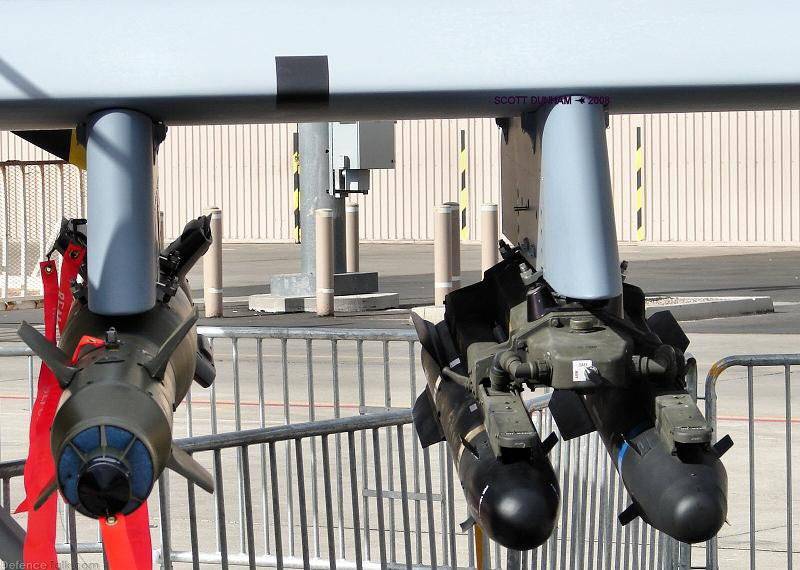
The MQ-1C Gray Eagle (Gray Eagle) of the US Army weighs 1.5 tons, carries 136 kg of sensors in the internal compartments and up to 227 kg of sensors and weapons on external hangers. It has a flight time of up to 36 hours, and its maximum speed is 270 kilometers per hour. The wing span of the Gray Eagle is 18 meters, and the length of 9 meters. The MQ-1C is able to land and take off automatically and carry four Hellfire missiles (compared to two on the Predator).
China is trying to export drones almost identical to the Predator, but about 20 percent lighter. A replacement for the MQ-9 (MQ-X) is still in the design phase, although budget cuts and sensor improvements (multiple cameras on one drone) can force the Air Force to simply "develop" the MQ-9. Currently, this means adding electronic warfare and missile defense equipment that will allow drones to survive in areas of enemy air defenses. There is also a need for better flight control software and improved ability to operate at low temperatures (in places like Afghanistan) where wing icing is common.
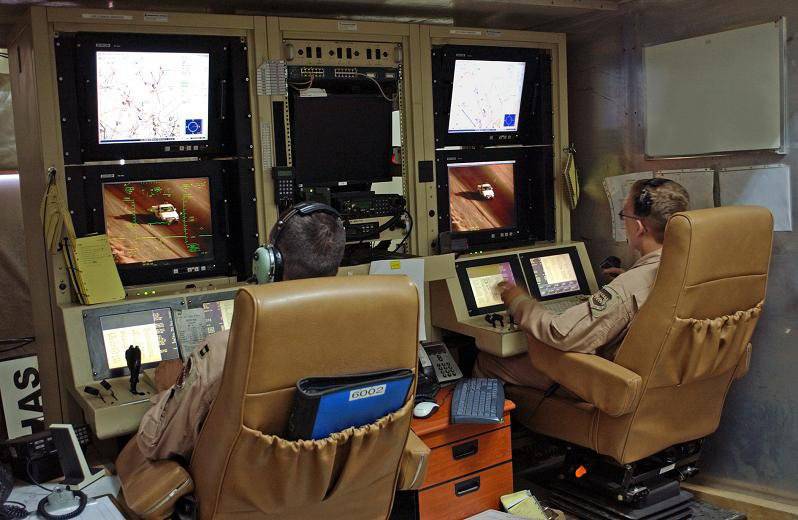
The Air Force wants to increase the reliability of its UAVs and reduce the level of losses (the number of UAV losses on 100,000 flight hours). As of last year, the loss of the MQ-1 Predator was approximately at the level of 7. This is twice as high as that of manned fighter aircraft (like the F-15 or F-16) and five times higher than that of the old, but very reliable B-52. This is about the same level as single-engine private jets (8.2).
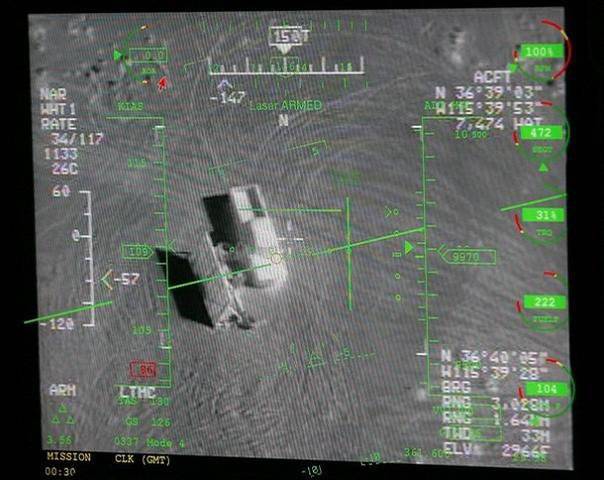
Just a few years ago, the loss rate of the 1.1-tonnes MQ-1 was equal to 30. Last year, after four years of service, the 4.7-tonne MQ-9 Reaper had a loss level of around 15. It has been more than ten years since the MQ-9 made its first flight, Predator has been in service since the end of the 1990. The design and operation of the MQ-9 was largely based on the experience of the MQ-1.
Drones always suffered heavy losses, largely due to the lack of both the pilot on board and all possible actions to compensate for his absence. Older UAV models had a very high level of losses. RQ-2A The Pioneer era of the 1980-ies had a 363 loss rate of the unit on 100,000 flying hours. Despite this, the RQ-2 was in high demand during the Gulf War in 1991.
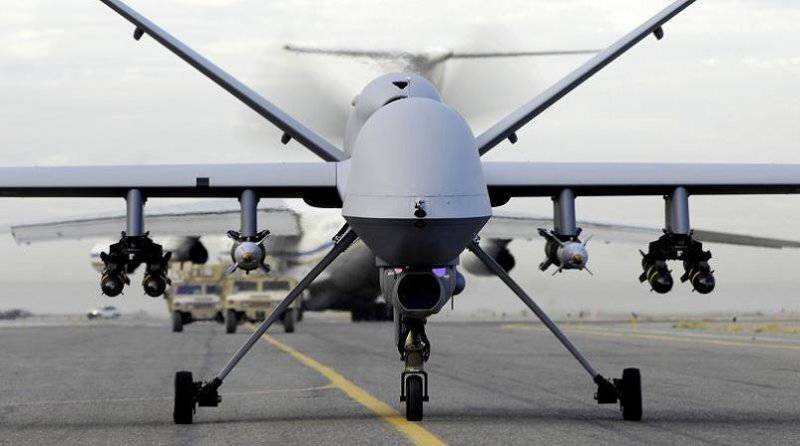
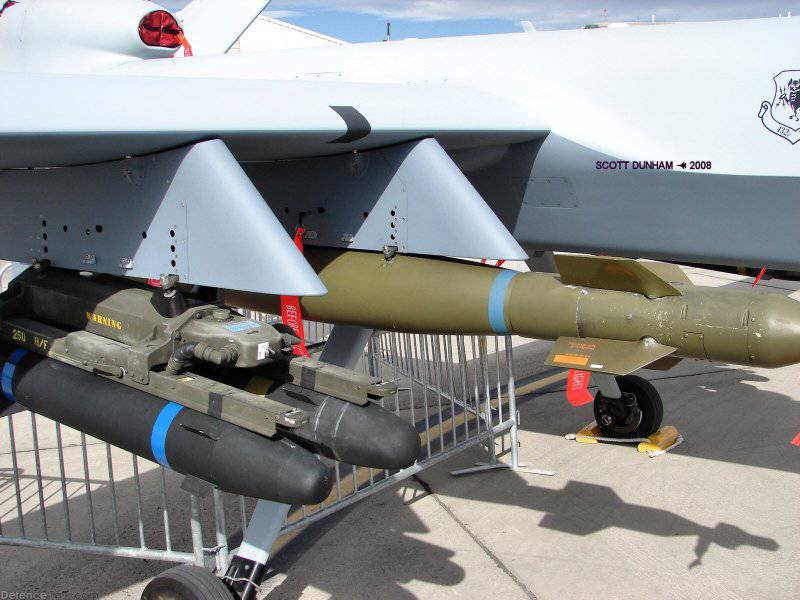
Information